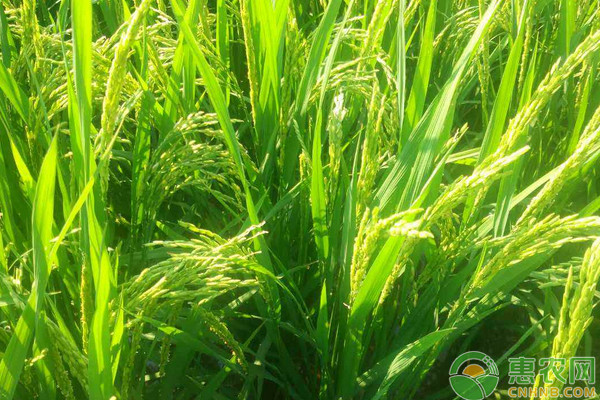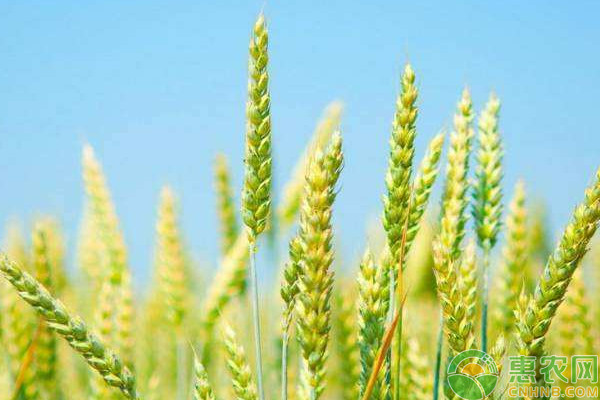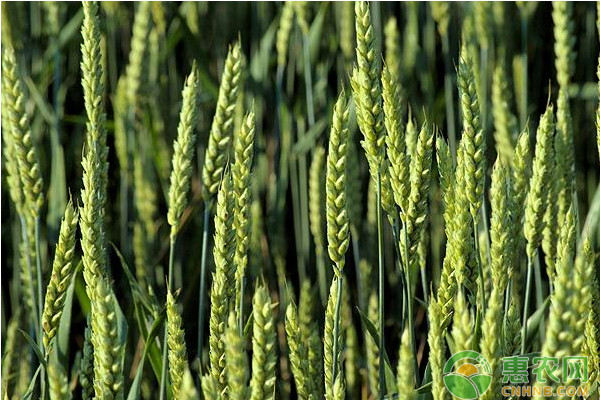How can wheat be grown to achieve high yield? In the process of wheat cultivation, sowing, seedling, fertilization, pest control and other aspects are very important. Only by doing a good job in every link, wheat can achieve high-yield cultivation. The following small series has compiled a wheat cultivation technique for everyone. .

1 Land consolidation
1.1 application of organic fertilizer
The quality of the soil determines the yield of the wheat. While ensuring the basic yield of the wheat, in order to cultivate high-yielding wheat, it is necessary to implement land preparation techniques to increase soil fertility. In the preparation of the land, in addition to tillage, organic fertilizer is also applied. In general, the fertilization amount of organic fertilizer is 40t/km2 or more. When farmyard manure is lacking, wheat straw or root can be backfilled, which can replace farmyard manure. Measure the amount of elements in the soil to achieve scientific fertilization. Nitrogen, phosphorus and potassium fertilizers are commonly used fertilizers in agricultural production. Generally, in the medium-high fertility soil, urea is applied at 175~220kg/km2, diammonium is 300kg/km2, potassium fertilizer is 275~300kg/km2, and zinc sulfate is 20~30kg/km2. It is necessary to pay attention to uniform fertilization, not to accumulate fertilizer, or it is easy to produce seedlings.
1.2 Deep tillage and land preparation
The soil preparation is to loosen the agglomerated soil, increase the oxygen content in the soil, kill the wintering eggs and pests and diseases, and ensure the full seedling rate and seedling rate of the wheat. The ground preparation method is one flat, two equal, and three loose. One level refers to the leveling of the land. The machinery should be deeply ploughed to the soil below 20cm, and leveled after ploughing to avoid the problem of avoiding the groove ridges to ensure that the water will not deposit in the depressed part; the second refers to the uniform thickness of the soil, fertility Uniform; Sansong means that the looseness of the soil is sufficient, there is no waste, the soil structure is very fine, so that the soil layer is distinct, and the upper layer is loose. When carrying out deep ploughing, it is necessary to ensure that there are no problems such as leakage and ploughing.
2 Seed selection and sowing
2.1 Selection
The use of nationally certified wheat varieties can increase the ability of wheat to resist pests and diseases while ensuring increased yield. For example, in the Heze area of ​​Shandong Province, excellent wheat varieties such as Dwarf Kang 58, Hemai 17, and Tainong 18 can be used to improve wheat yield by utilizing local natural resources.
2.2 Seed treatment
The processing of wheat seeds mainly includes three parts: selection, germination test and chemical dressing. The selection and germination test is to further increase the emergence rate of wheat seeds; the seed dressing is to control pests such as cockroaches, golden worms, and midges, as well as rodents. For the dressing of pesticides, conventional medicines can be used. In order to increase the yield of wheat, the Medina nutrient solution can also be used. The 75kg seeds can be seeded according to the ratio of the agent to water 1:800, and the content of trace elements in the soil can be adjusted to further increase the seed. Germination rate.
2.3 Calculating the amount of broadcast
The amount of wheat planted should be appropriate. Too little will result in thinning of the seedlings, and too much will reduce the survival rate of the wheat seedlings. Rational planting should be carried out according to land area, soil fertility and wheat varieties. In general, the basic seedlings per 667 m2 of wheat seedlings are between 150,000 and 200,000, and the amount used is 7.5 to 10 kg.
2.4 Determination of sowing date
The sowing time of wheat needs to be determined according to the temperature of the area. When the temperature in the spring reaches 3~6 °C and gradually stabilizes, the temperature in the soil reaches about 4 °C, so it can be planted. Taking Shandong as an example, due to the rapid increase in temperature, the spring wheat sowing time in Shandong is generally from late March to early April; winter wheat is the best time from October 3-8. Due to the inconsistent climate in different regions, the cultivated varieties are different, so the suitable sowing period should refer to the local natural conditions.
2.5 smashing land preparation
About 3 days before sowing, the agricultural staff used the water content of 3.8% of the gram-free drug to be diluted 1000-1200 times, and chemically weeded according to the spraying amount of 200-250 m L/667 m2. When using gram without trace, only use clean water, do not use muddy water or mixed water, otherwise it will reduce the effect. During the spraying process, the roots of the weeds should be aligned to avoid leaking or re-spraying. Before planting, to remove the straw left in the field, you can use mechanical rotation to weed.
2.6 sowing trenching
In the process of wheat sowing, in order to ensure the speed of the machine advancement, the seeding rate is not affected, and the uniformity of the falling pieces is ensured, and the seeding can be quantitatively divided. According to the width of 1.4m, use mechanical trenching, the groove width is 20~30cm, the depth is 30~35cm, the ditch should be straight, to ensure the uniformity of the wheat cover soil, and the middle of the ditch should have a certain height to facilitate draining.

3 Field management
3.1 Seedling management
When the wheat emerges, it is found that the seedlings are lacking, and it is necessary to transplant the soil in time to replenish the seedlings or germination to replenish the seedlings; if the seedlings are thick, they should be removed in time to avoid competing for nutrients. When the wheat is emerged, the weeds should be cultivated, usually in a good afternoon, to control weed growth and soil. 25m L of 40% dimethoate 1500-fold dilution or 50m L of 90% trichlorfon 1000-fold dilution can be used to spray 10~15m protective tape in the field to prevent bushes and insects. When spraying, do not spray directly on the seedlings, nor spray it on rain or cloudy days to avoid waste.
3.2 topdressing and watering
After the emergence of wheat, it is necessary to topdress according to the growth of wheat seedlings. If the wheat seedlings are yellow or slow to grow, they should be watered and fertilized in time. After snowfall or rainfall, they can be properly topdressed. After the snow melts, the fertilizer will be melted and the wheat seedlings will be absorbed. In spring, water evaporates vigorously, requiring topdressing and weeding to reduce pests and diseases. Urea can be applied, evenly spread in the field according to the amount of fertilizer applied at 10kg/667m2. In order to make the wheat seedlings strong, the nitrogen and phosphorus fertilizers can be traced, and the nitrogen fertilizer does not exceed 7kg/667m2. The amount of water to be watered should be adjusted according to the amount of fertilizer applied, and should not be excessive. In addition, within 10 days of emergence of wheat seedlings, agricultural personnel should regularly visit the field to check if water shortage is needed in time to prevent the emergence rate due to lack of water.
4 Pest control
4.1 Treatment of the larvae
The midges are mainly found during the emergence of wheat, mainly by sucking the juice in wheat. When opening the soil, use 800m L of 50% phoxim emulsifiable concentrate 800~1000 times, or mix 3kg of 5% carbaryl with 20kg of fine soil, spread evenly in the wheat ridge and Watering in time; for adults, it can be evenly sprayed with 85m L of 50% phoxim emulsifiable concentrate 800 times diluted solution or 120m L of 5% high-efficiency chlorocyanic acid 1500 times diluted solution, which can effectively eliminate adult worms. At the same time, you can also use 120ml L of 80% dichlorvos with water 5kg mixed wheat, evenly sprinkled in the field for fumigation in the evening, can also play a good deworming effect.

4.2 governance strip rust
There are many causes of wheat stripe rust, mainly due to the influence of temperature and moisture, which can cause spots on the leaves of wheat seedlings, and then yellow and dry. For strip rust, resistant varieties can be selected at the time of sowing. When it is found that there is a pile of powder in the leaves, foliar spraying is carried out with a 0.3% content of 0.3% of the rusting or a 125% of 1.5% of the premium, to prevent the strip rust. When spraying, be careful not to leak.
4.3 Control of wheat bran
The wheat stubble mainly feeds on the rhizome and leaves of the wheat seedlings, which in turn reduces the growth rate of the wheat and ultimately leads to agricultural production reduction. The wheat bran mainly feeds on the wheat leaf, sucks the juice, and is fast in reproduction and extremely harmful, which can cause large-scale pests. For wheat bran, the choice of wheat with disease resistance can effectively reduce the incidence of wheat. At the same time, when the wheat bran is found, 50% wettable powder can be used 4~8g, water spray 20~50kg evenly spray, it is safe and harmless to the main natural enemies such as ladybugs and grasshoppers, and can also use 2.5% Tianda high-efficiency chlorine. Cyfluthrin EC 1500 times liquid plus 3% chlorpyrifos emulsifiable concentrate 1000 times liquid for plant spraying, the control effect can reach more than 95%; 50% 蚜 蚜 fog WP, 10~12g per 667m2, water 15~30kg spray, the effect is more than 90%, and it is basically harmless to natural enemies.
4.4 Control wheat smut
Wheat smut is a gray film on the outer edge of the spikelet. It breaks after maturity and scatters black powder. After the black powder is blown away, only the bare cob remains, and the spikelets on the diseased ear are all destroyed or partially destroyed. , the symptoms are obvious after jointing. For wheat smut, 105g of 15% powder rust powder or 120g of 20% powder rust emulsifiable concentrate can be used to control smut. You can also use 75g of 50% carbendazim wettable powder 200~400 times dilution and spray on the leaf surface to control the disease.
4.5 Other disease prevention methods
In the early stage of wheat flowering, if continuous rainfall, 4% carbendazim suspension 100g plus water 50kg spray can be used to control scab; spray treatment can be controlled by spraying 12.5% ​​of 12M L and 50kg of water for 1~2 times.
5 Conclusion
The use of wheat cultivation techniques can effectively solve the problem of wheat pests and diseases. On the basis of this, by appropriate topdressing after snowfall or rainfall, the snow water will melt the fertilizer, promote the absorption of the wheat seedlings, and increase the fertility of the wheat field. At the same time, it can replace farmyard manure by backfilling wheat straw or roots. Therefore, in the face of wheat cultivation technology problems, it can be answered from the four aspects of land consolidation, seed selection and sowing, field management, and pest control.
The above is the whole content of wheat cultivation technology. If you feel that this content is helpful to you, please continue to pay attention to our Hui Nong network, Hui Nong.com will provide you with more and more comprehensive agricultural technology and information in the future!
Wenzhou Celecare Medical Instruments Co.,Ltd , https://www.wzcelecare.com